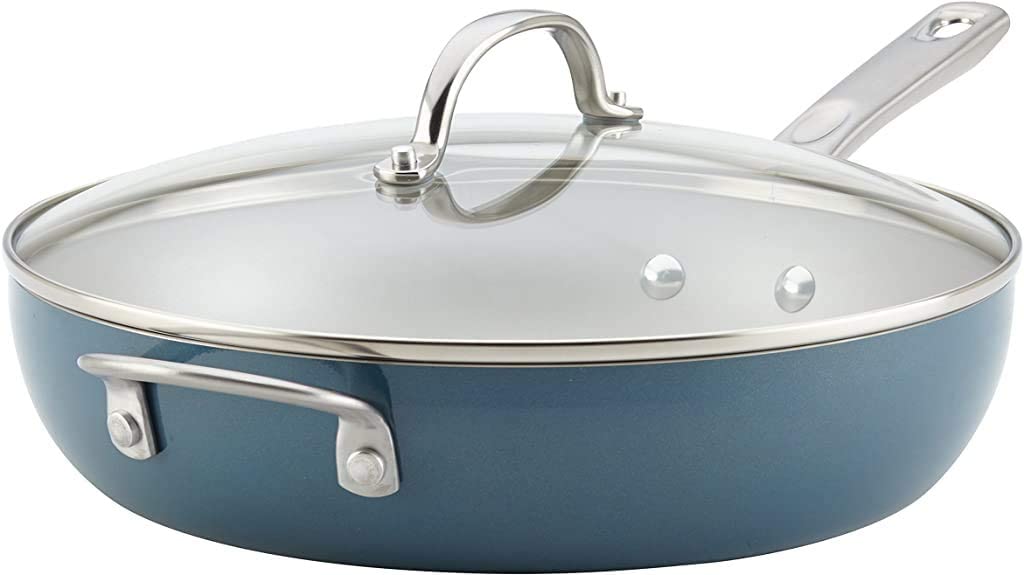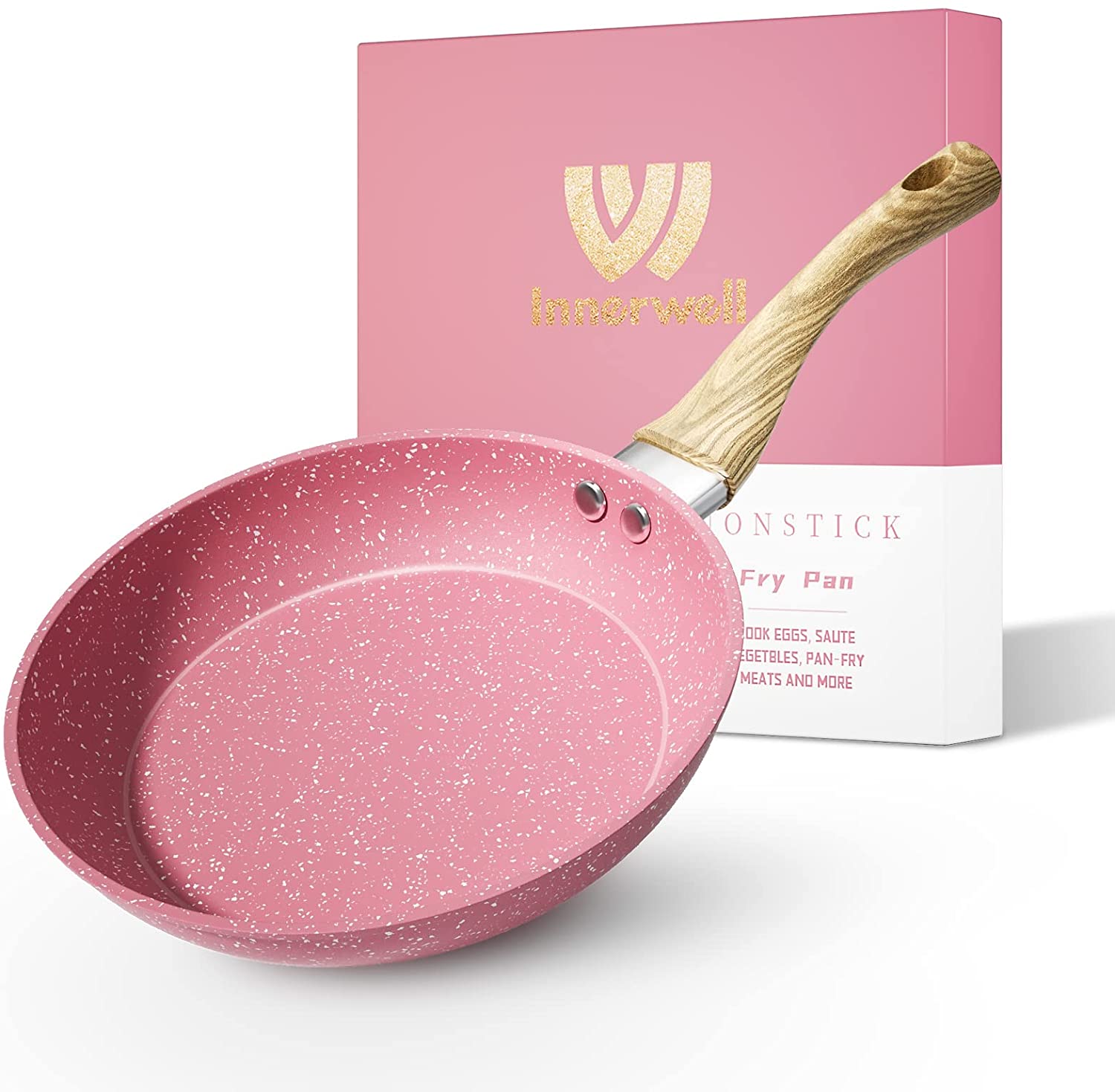Considering how much scrubbing dishes clean can really suck, it definitely makes sense to want to spray down your cooking pans before firing up the stove so nothing sticks. (And muffin tins—the absolute worst to wash IMHO.) Now there is definitely a time and place for cooking spray, but according to Kierin Baldwin, chef-instructor at the Institute of Culinary Education, there is one major mistake home cooks often make with it: using it on nonstick cookware.
“PAM and similar non-stick sprays are designed to evenly coat a pan and they have various propellants and anti-foaming agents added to their formulation in addition to the fats that they contain,” Baldwin says. “Because they completely and evenly coat the pan, they stay on all surfaces that have been sprayed, especially ones that haven’t come in contact with the food being cooked.” She explains that when they’re exposed to heat, the spray can dry out and cook, which can harden into a sticky coating on your pan. The worst part? It can’t be removed unless you use chemicals or a heck of a lot of elbow grease. “Either of those methods of removing that residue can potentially damage the areas of exposed non-stick pan surface during cleaning, making it extremely difficult to save the pan,” Baldwin adds.
She explains that over time, the problem just gets worse. “The buildup covers the nonstick surface of your pan. The residue itself is not nonstick, so it will make your pan stop working as it was intended,” Baldwin explains. Not exactly ideal—especially if you shelled out for nice nonstick pans.
If you want to save yourself all this grief, Baldwin’s best advice is to use a non-aerosol form of fat to prevent foods from sticking to your pan (like olive oil or avocado oil), and to really read the directions on your nonstick cookware. This, ideally, should happen before you start using your new pots and pans so you know exactly how to care for them both when it comes to cooking and washing. If you don’t have the original packaging for your pans, try Googling the brand name and model type; chances are you’ll be able to find the directions online. “They will tell you what the proper procedure for cleaning that particular pan is according to its manufacturer, which can be different depending on the type of coating it has,” Baldwin says.
In general, Baldwin says to avoid using chemical cleaners when washing your nonstick pans because they can damage the surface. She also says to avoid stacking pans or dishes on the nonstick surface of the pans because it could damage and scratch them. Last, don’t use metal utensils (like forks or stainless steel spatulas) when cooking on nonstick cookware. “Some pans say you can use metal utensils on them, but I would not go too crazy with that no matter what the manufacturer says the pan can take,” Baldwin says.
So, does a pro chef like Baldwin even use PAM and other similar cooking sprays at all? She sure does—exclusively when baking in uncoated aluminum or glass bakeware. “The way it coats and sticks to a surface is exactly what you want for preparing a pan for a cake or brownies and this is just the kind of job it was designed for,” she says, adding that she does wipe away any excess spray that is not in contact with the batter she’s baking so that it won’t build up on the bakeware when exposed to heat in the oven. When it comes to cooking, Baldwin says she uses clarified butter or olive oil instead of cooking spray. “It is important to remember that even non-stick pans will stick if you use them without any fat at all, so you do need to use something,” she says.
If you don’t own any nonstick pans—or you could use some new ones—check out the below options. Now that you know exactly how to cook and care for them, they’re bound to last for years, cooking up plenty of delicious meals in the meantime.
Nonstick pans

All-Clad NS1 Nonstick Induction Fry Pan, Set of 2 — $70.00
Nothing beats the impressive heating abilities of All-Clad’s anodized aluminum NS1 line, made from a rugged three-layer PFOA-free nonstick surface and induction-compatible steel bases. You can rely on this versatile set of fry pans from breakfast through dinner for frying up eggs, searing and browning fish, sauteing, vegetables, and more.

Ayesha Curry Home Collection Nonstick Skillet — $40.00
Okay, so this skillet won’t magically transform you into an Ayesha Curry-level chef, but you’ll at least look good trying. Made with porcelain enamel, this nonstick skillet comes with a glass lid—key for so many delicious recipes.

Innerwell Nonstick Frying Pan — $23.00
You won’t find a cuter nonstick frying pan than this blush pink one. It’s so pretty you’ll want to leave it out even when you aren’t cooking!
Oh hi! You look like someone who loves free workouts, discounts for cutting-edge wellness brands, and exclusive Well+Good content. Sign up for Well+, our online community of wellness insiders, and unlock your rewards instantly.
Our editors independently select these products. Making a purchase through our links may earn Well+Good a commission.
